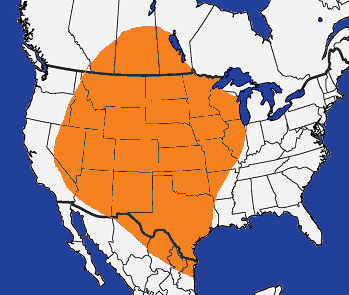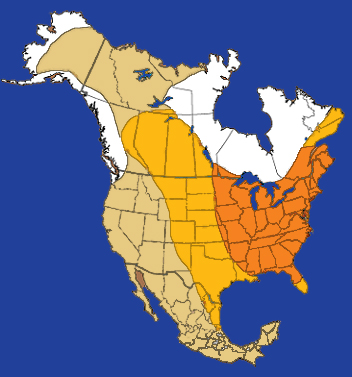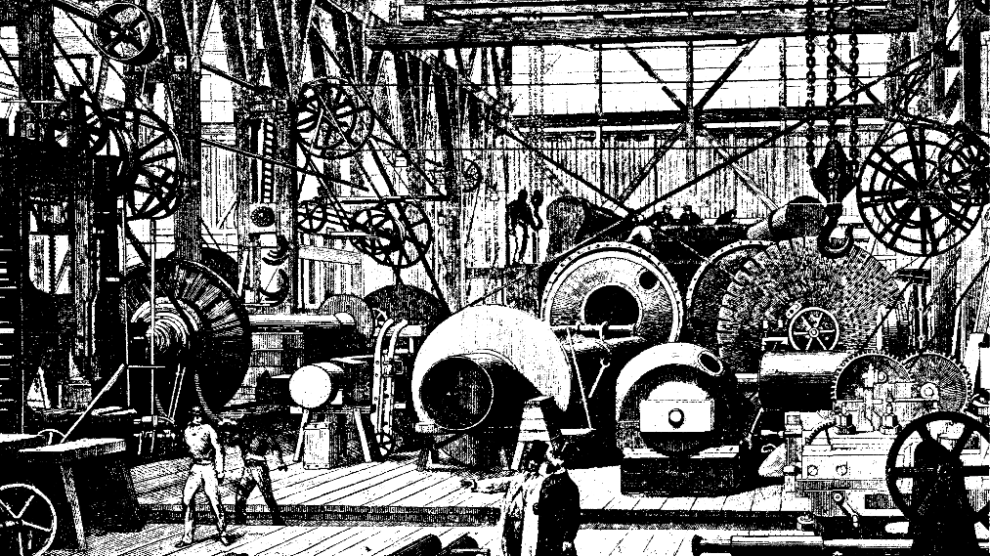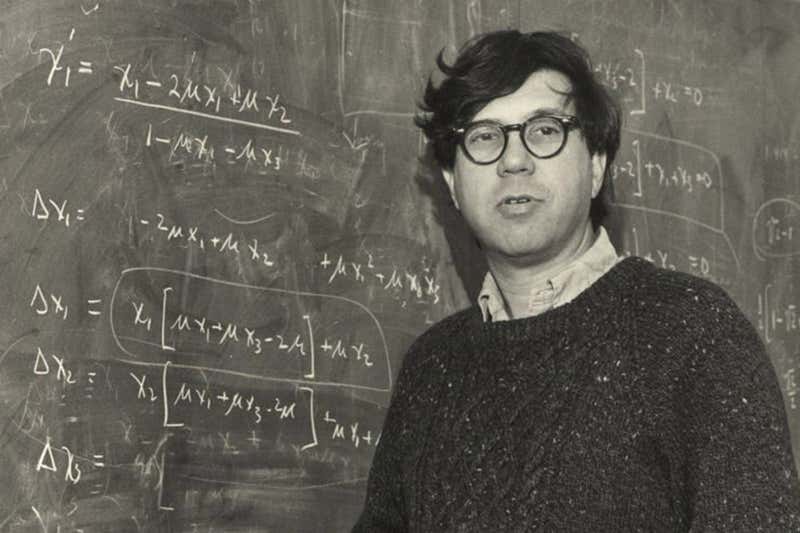Revolutionary Lives: George McJunkin
The Black Cowboy Who Revolutionized the Archeology of the Americas
By Clifford D. Conner
Volume 24, Number 1, Racial Capitalism
July 7, 2021

The story of George McJunkin is a David-and-Goliath tale in which a former slave with no formal education challenges defenders of scholarly orthodoxy to combat on the field of science—and wins. McJunkin was a cowboy and amateur archeologist in early twentieth-century New Mexico who discovered “arguably the most important archeological site ever to be excavated in the Americas.”1
The Saga of a Scientific Revolutionary
At the beginning of the twentieth century, fields of science such as archeology, paleontology, and anthropology were striving to enhance their status as “real sciences” in the United States. The evidence and techniques at their disposal were relatively primitive and inadequate, and they were heavily encumbered by biases derived from the legacy of European “racial science.”
Nonetheless, the professionalization of those fields had produced a scientific establishment that jealously guarded its prerogative to determine and control the special knowledge of its domain. Its self-imposed sacred mission was to defend archeology and its allied sciences against the onslaught of pseudoscience generated by legions of avocational archeologists—amateur bone-hunters and other self-educated enthusiasts.
A central concern of the nascent science was to ascertain how many thousands of years humans had occupied the Western Hemisphere. The establishment dogma held that the first people from the Old World could have arrived in the Americas no more than three or four thousand years before. That was a bone of contention (pun intended) over which scientific controversy long raged.
Enter George McJunkin, who was born a slave in Texas in the 1850s. In 1908, McJunkin made a pivotal discovery that resulted in an archeological paradigm shift worthy of celebration as a “scientific revolution.”
McJunkin was in his early teens when, on Juneteenth—June 19, 1865, the news belatedly arrived in Texas that slavery had been abolished. He took the opportunity his newfound freedom offered to move west to find work. Having never attended school, he was illiterate but exhibited an unquenchable thirst for knowledge.
In 1908, McJunkin made a pivotal discovery that resulted in an archeological paradigm shift worthy of celebration as a “scientific revolution.”
How McJunkin gained literacy is not known with certainty, but once he could read, he did so voraciously and developed strong interests in the natural sciences. By 1908, he had worked his way up to being the foreman of the Crowfoot Ranch near Folsom, New Mexico. On August 27th of that year, a flash flood devastated Folsom and its surroundings, killing approximately seventeen of the town’s eight hundred or so inhabitants. Soon thereafter, McJunkin rode out to assess the damage to the ranch’s fences and came upon a deep gully that the storm had ripped into the landscape. He saw some large bones protruding out of the gully’s wall, about ten feet below the surface. McJunkin’s self-education had prepared him to recognize them as fossilized bison bones, and to realize that they were too large to be from any living species, so he knew he’d made an important find.
McJunkin tried to bring his discovery to the attention of his fellow amateur bone-hunters, but was unable to find any who were interested enough to make the thirty-mile, two-day ride on horseback that it would have taken to see them. McJunkin died 14 years later, in January 1922, and despite his efforts, in all that time no one had ever come to examine the bones he had found.
However, two of the avocational archeologists he had previously contacted, a blacksmith named Carl Schwachheim and a banker named Fred Howarth, had not forgotten what McJunkin had told them. When Howarth bought an automobile, McJunkin’s bone pit was then only an afternoon’s drive away, and so he and Schwachheim went to see it. Unfortunately, their first visit to the bones was after McJunkin’s death.
Schwachheim and Howarth sensed the importance of McJunkin’s discovery and took up his quest to alert professional scientists. Four years later, in 1926, they succeeded in piquing the interest of Jesse D. Figgins, director of the Colorado Museum of Natural History.2 Figgins confirmed that the bones were those of an extinct Pleistocene bison, Bison antiquus, and organized a team, including Schwachheim, to systematically excavate McJunkin’s bone pit.
The following year, 1927, Schwachheim was digging there and made a momentous discovery. He found a spear point embedded between the ribs of one of the extinct bisons—unmistakable evidence that human beings had been in the Americas many thousands of years earlier than previously believed.3

“It was at Folsom,” archeologist David Meltzer declares, “that a decades-long, exceedingly bitter controversy over human antiquity in America was finally resolved.” That marked a “turning point in American archeology—when our discipline finally found itself in possession of deep time.”4
“It was American archeology’s good fortune,” Meltzer added, that an “intellectually curious cowboy was checking the Crowfoot’s fence lines and cattle after the Folsom flood.” Few others “would have noticed or appreciated the significance of the bones jutting out of the bottom of the newly incised arroyo.”5
That marked a “turning point in American archeology—when our discipline finally found itself in possession of deep time.”
Enter the Villain
If McJunkin is this story’s hero, its villain is Aleš Hrdlička, curator of the Smithsonian Institution’s Division of Physical Anthropology. In demeanor and appearance, Hrdlička was perfect for the role: “With his stern gaze, scowling mustache, and long, thick hair that swept straight back from the forehead, Hrdlička was the very image of celluloid-collar Authority.”6
Hrdlička ruled over archeology and physical anthropology as an autocrat of science with the power to destroy the careers of aspiring researchers who dared challenge the orthodox timeline of human occupation of the Americas. Dissent within the profession was effectively suppressed, and dissent from outside the profession, from amateurs, was dismissed as the worthless rantings of charlatans and crackpots.7
It is likely that Hrdlička never heard of George McJunkin, and he did everything in his power to discredit Figgins and the Folsom findings. Unfortunately for science, he initially succeeded in preventing serious consideration of the new evidence. But another tidal wave was about to crash against the old orthodoxy.
The Sequel that Turned Out to Be a Prequel: From Folsom to Clovis
In 1929, near another small New Mexico town, a repetition of history seemingly unfolded, featuring a Native American teenager named Ridgley Whiteman.8 Whiteman, an Eagle Scout and amateur archeologist, encountered exposed bones while exploring a basin south of Clovis, New Mexico, and recognized them as the remains of extinct megafauna—mammoths, bison, camels, and horses—together with scattered arrowheads and other artifacts evidencing a human presence. Having avidly followed local news reports of the Folsom excavations, he was fully aware of the significance of his find and immediately dispatched a letter to Hrdlička’s fiefdom, the Smithsonian Institution in Washington.
The Smithsonian responded by sending paleontologist Charles Gilmore to investigate. “In one of archeology’s great missed opportunities,” author Charles C. Mann explains, “Gilmore walked around the area for an hour, decided that it was of no interest, and took the train back to Washington.”9 Whiteman was disappointed by the rebuff, but not deterred. The young man’s persistent appeals to establishment experts aroused the interest of Edgar B. Howard, an archeologist-in-training at the graduate school of the University of Pennsylvania.
In the summer of 1932, Howard embarked upon a systematic four-year archeological examination of the Clovis site. The care with which he documented his evidence further strengthened the new consensus among professional archeologists that humans had indeed inhabited the Americas for more than ten thousand years. Hrdlička apparently excluded himself from that consensus. Although not formally conceding defeat, he seems to have henceforth studiously avoided directly addressing the issue.10

culture (c. 15,000–10,000 B.P.). Adapted
from projectilepoints.net
Howard’s fieldwork demonstrated that the Clovis culture was distinct from and predated the Folsom culture, a conclusion corroborated in the 1950s when the newly developed techniques of radiocarbon dating were applied to archeology.11 For most of the rest of the twentieth century, the “Clovis First” hypothesis displaced Hrdlička’s old orthodoxy with a new one that reset the boundary of human antiquity in the Western Hemisphere at approximately 13,000 BP. In recent years, however, that revised orthodoxy has in turn been overthrown by mounting fossil, DNA, climatological, and linguistic evidence of an even earlier—perhaps tens of thousands of years earlier—human presence throughout the Americas. As Charles C. Mann has observed, however, “Clovis may no longer be the oldest American culture, but it remains the oldest American culture we know much about.”12
Credit Where Credit Is Due
George McJunkin’s discovery touched off a scientific revolution leading to a new scientific paradigm that vastly increased knowledge of prehistoric human habitation of the Western Hemisphere.13 Ridgley Whiteman’s subsequent contribution to the archeology of the Americas was not independent of McJunkin’s; the Folsom find opened the way to Clovis and all that followed.
It took almost fifty years after McJunkin’s death for his primary role in the chain of discoveries to come to light. Schwachheim and Howarth received some credit for the Folsom find, but McJunkin was ignored until the 1960s when George Agogino, an archeologist at Eastern New Mexico University, heard a “myth” about an ex-slave finding the bones, systematically investigated it, and found that George McJunkin’s groundbreaking contribution to the history of science was not at all mythological. Agogino and a biographer, Franklin Folsom, embarked upon an ambitious oral history project to establish the authenticity of McJunkin’s priority and publish it.14
When professional science institutions circle the wagons to protect ossified orthodoxies against outsiders’ critiques, they do so at the risk of inhibiting the advance of scientific knowledge.
Today, paradoxically, McJunkin has become “one of the most famous ‘forgotten’ men in American history.”15 Although rarely mentioned in professional archeological literature, he has become a folk hero to African-Americans striving to rescue their ancestor’s history from the disregard of historians, archeologists, and the scientific and institutional literature on human migration, culture, and civilization.16 Ridgley Whiteman’s contribution to archeological knowledge has likewise been more often celebrated in popular accounts than recognized in the scholarly literature.
The narratives of McJunkin’s and Whiteman’s accomplishments illuminate an important shared moral: When professional science institutions circle the wagons to protect ossified orthodoxies against outsiders’ critiques, they do so at the risk of inhibiting the advance of scientific knowledge. And it is not only science that suffers. Suppressing non-elite voices reinforces dominant social and political paradigms, upholds racism and all forms of discrimination, and cuts us all off from our common history.
About the Author
Clifford D. Conner is a historian of science. He is the author of The Tragedy of American Science (Haymarket Books, 2020) and A People’s History of Science (Bold Type Books, 2005).
References
- Douglas H. MacDonald, “Book Review of Folsom by David Meltzer,” American Antiquity, vol. 72, no. 4 (October 2007), 793–94.
- Now the Denver Museum of Nature and Science.
- “That Folsom point instantly became an icon, and it remains prominently on display at DMNS [Denver Museum of Nature and Science], still in its original sediment block.” Stephen E. Nash, “How the Folsom Point Became an Archaeological Icon,” Sapiens, July 28, 2017.
- David J. Meltzer, Folsom: New Archaeological Investigation of a Classic Paleoindian Bison Kill (Berkeley: University of California Press, 2006), xi and 23.
- Meltzer, Folsom, 21.
- Charles C. Mann, 1491: New Revelations of the Americas Before Columbus (New York: Knopf, 2005), 148.
- Hrdlička also became emblematic of anthropologists’ insensitivity to Indigenous peoples for his callous desecration of their remains. When given access to bodies of Yaqui Indians—victims of a 1902 massacre in Mexico—he “hacked off the heads with a machete and boiled them to remove the flesh for his study of Mexico’s ‘races.’” (“Mexico Indian Remains Returned from N.Y. Museum for Burial,” Associated Press, November 17, 2009 [updated January 14, 2015]).
- Anthony T. Boldurian, “Memorial: James Ridgley Whiteman, 1910–2003,” Plains Anthropologist, vol. 49, no. 189 (2004), 85–90.
- Mann, 1491, 153.
- See the account of Hrdlička’s presentation at the International Symposium of the Academy of Natural Science (Philadelphia, March 1937), in Mann, 1491, 152–3.
- Artifacts of the Folsom and Clovis cultures have been found throughout much of North America. The Folsom artifacts have been carbon-14 dated to ca. 12,600–12,200 BP and the older Clovis artifacts to ca. 13,100–12,900 BP.
- Charles C. Mann, “Discovery of America’s First Culture,” Smithsonian Magazine, November 2013.
- For a brilliant exposition of the complicated story of how the post-Folsom consensus developed, see Meltzer, Folsom, chapter 2: “Folsom and the Human Antiquity Controversy in America.”
- See George Agogino and Franklin Folsom, “Fact and Fiction on the Folsom Discovery,” Liberal Arts Reviews, vol. 1, no. 2 (1975), 23–24; George Agogino and Franklin Folsom, “New Light on an Old Site: Events Leading up to the Discovery of the Folsom Type Site,” Anthropological Journal of Canada, vol. 13, no. 2 (1975), 570–576. Folsom’s biography for young readers, Black Cowboy: The Life and Legend of George McJunkin (New York: E.P. Dutton, 1973), is fundamentally reliable despite the inclusion of a great deal of imaginative detail.
- Patrice Sherman, “George McJunkin: A Note on Sources,” patricesherman.com.
- David Meltzer’s Folsom: New Archaeological Investigation of a Classic Paleoindian Bison Kill is an important exception to the general disregard.





